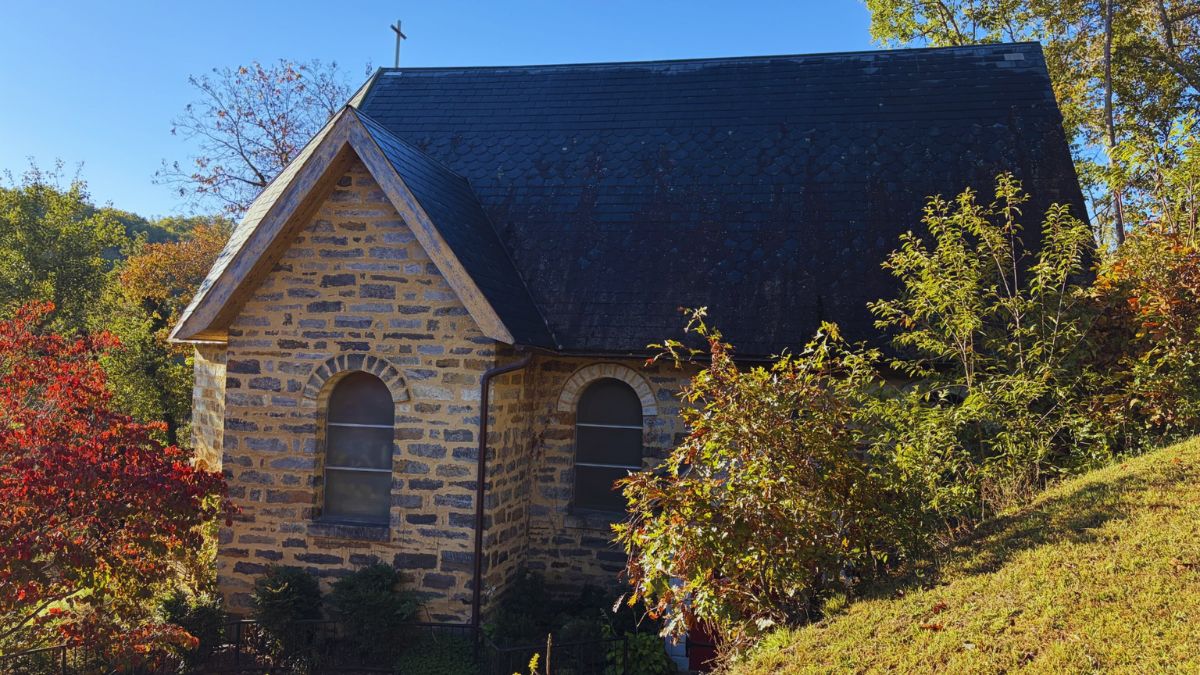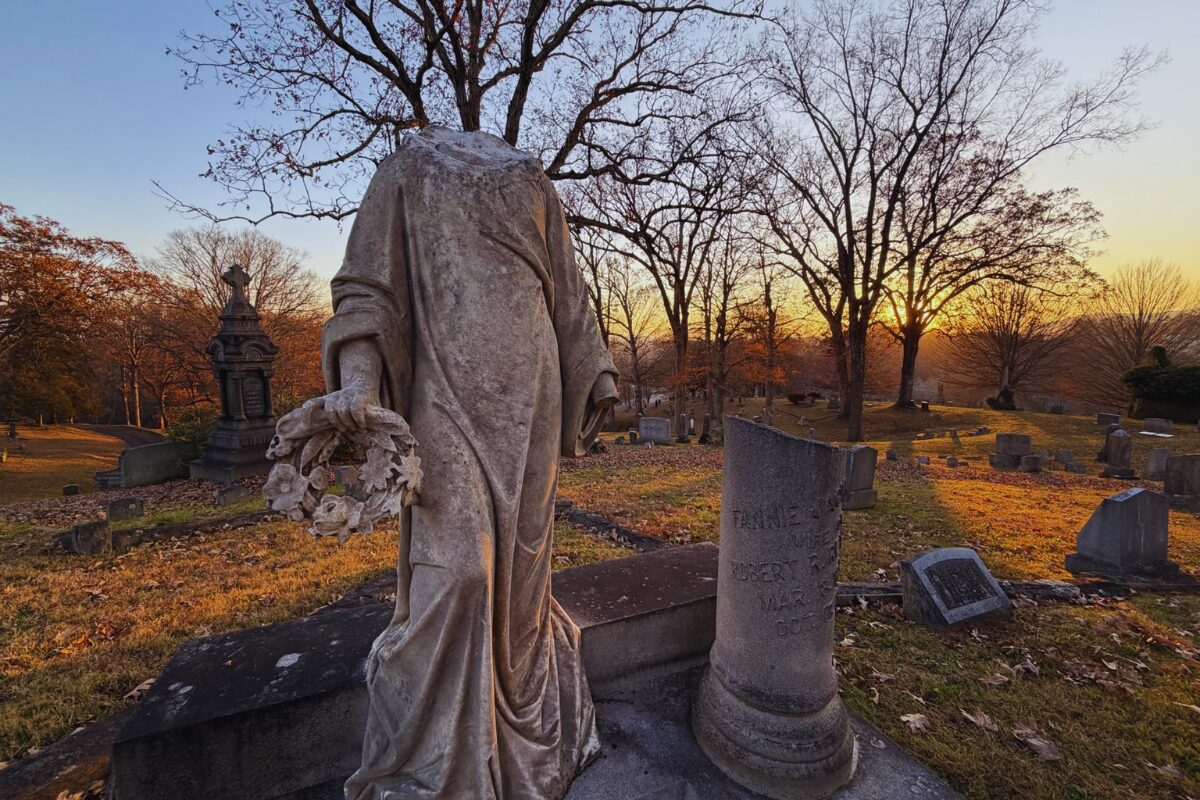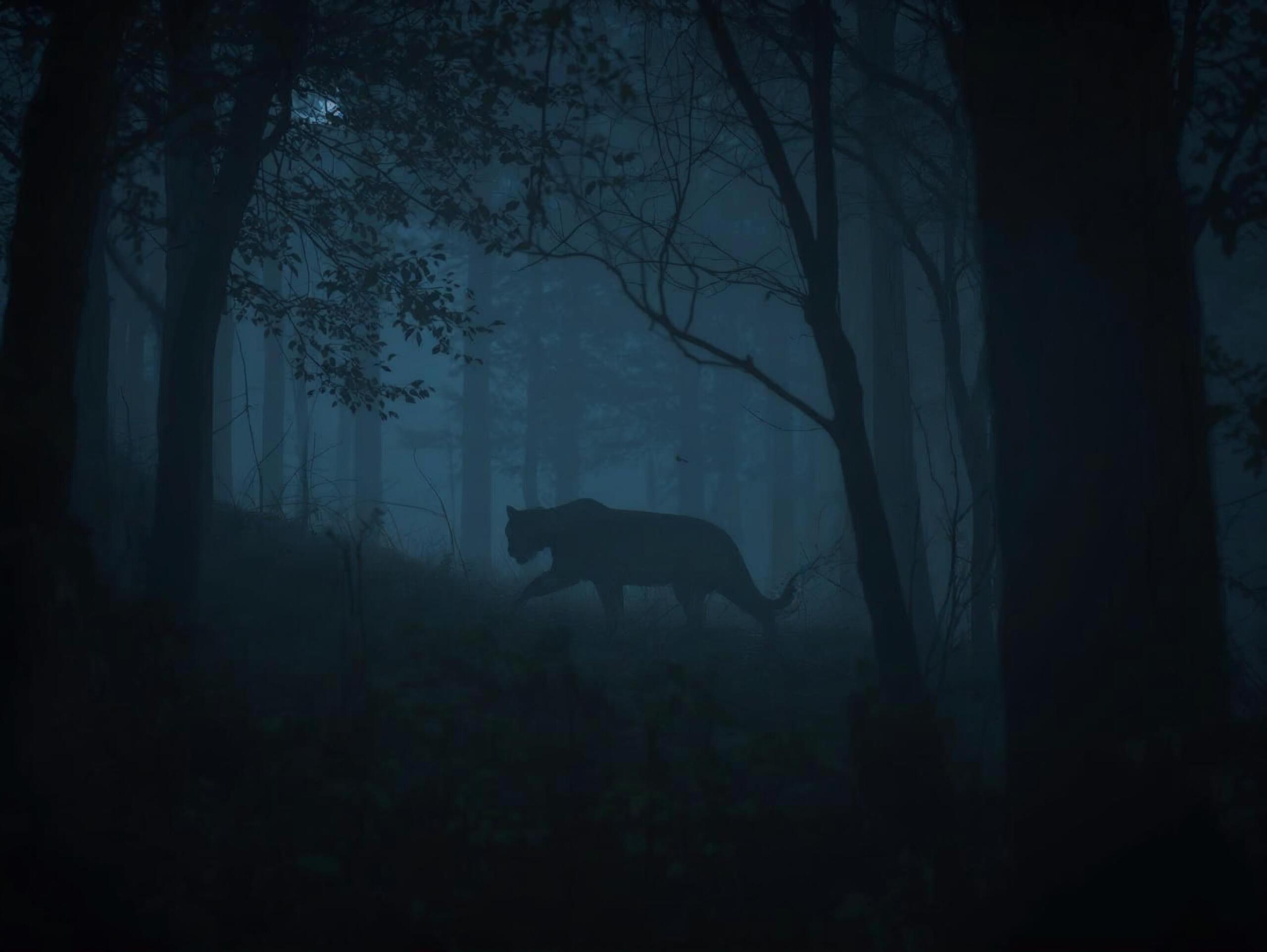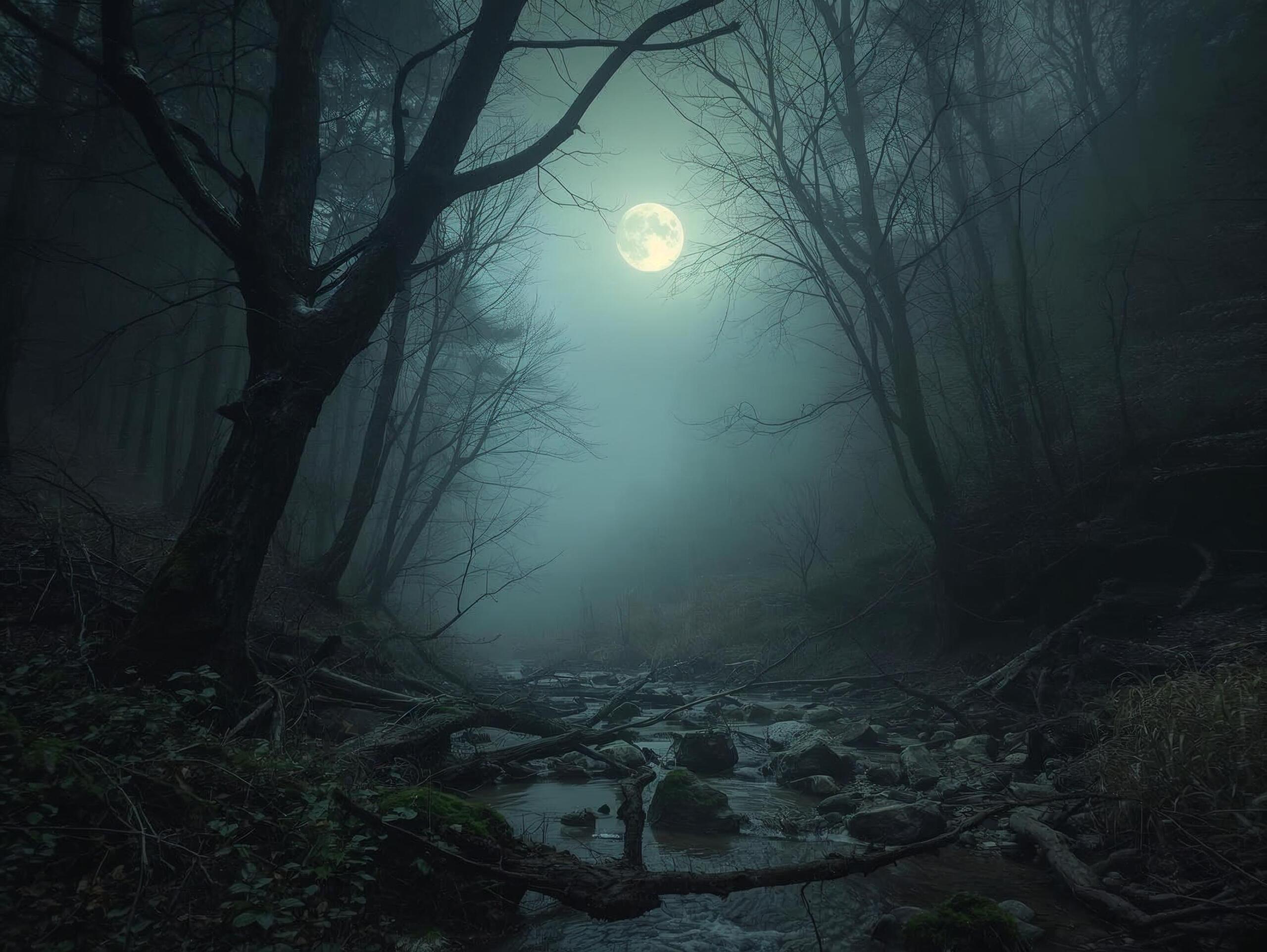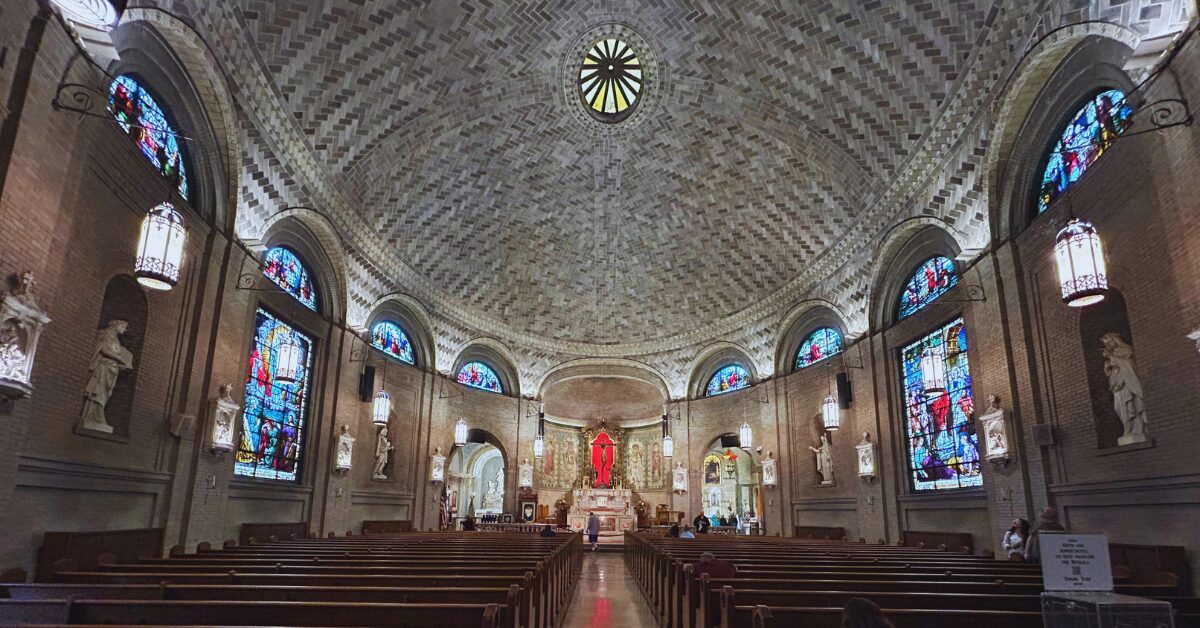EDITOR’S NOTE: Strangeville explores the curious and unexplained stories that have long defined Asheville and Western North Carolina. The region is full of unanswered questions, from old folklore and local legends to eerie encounters, unsolved moments in history, and the true-crime mysteries that still leave people wondering. Each week, we look back with an open mind and a sense of curiosity, trying to understand why some stories take hold and why some can never be explained.
WOODFIN, N.C. (828newsNOW) — As dusk settles over the French Broad River, people say an ethereal figure in white appears on the hillside above a small stone church. She moves through the old cemetery, descends the steps behind the chapel, crosses Riverside Drive, and vanishes into the river below.
Locals have passed down this story for generations. The mysterious figure is said to haunt the Church of the Redeemer in Woodfin, where the hillside cemetery watches over the chapel and the water beyond. The tale endures, and the setting itself encourages belief. The church is tucked into a bluff beneath the graves, its stone walls seeming to rise from the earth itself.
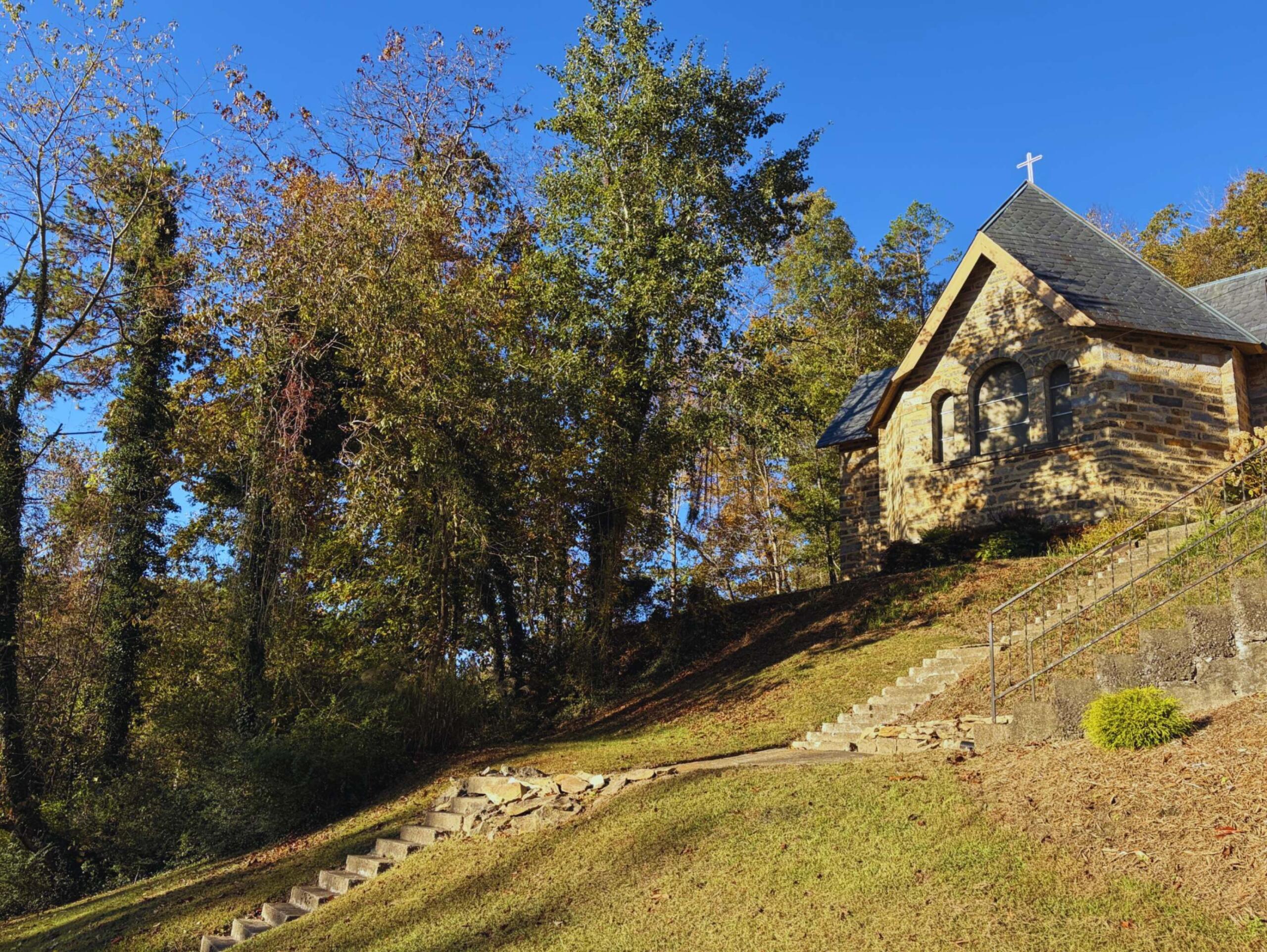
The Church of the Redeemer was built in the late 1880s by Dr. Francis Willis, a British physician who arrived in Buncombe County after leaving England. He came to the mountains with money and a vision that set him apart from his neighbors. Using native stone, he designed and oversaw construction of a Romanesque-style chapel that looked nothing like the wooden churches common in the region.
The style was rare in Western North Carolina, where most country churches were modest frame buildings. Willis’s chapel looked like something lifted from the English countryside and set down in the mountains. He named it St. Philip’s and opened it as a place of worship for his patients and nearby residents.
He saw the chapel as a sanctuary for those he served. Willis treated both Black and white residents, often without pay, and welcomed all who wished to worship. His approach reflected a quiet defiance of the social barriers that defined the South in that era. Though those efforts met resistance, they revealed his conviction that faith and service should be offered without distinction.
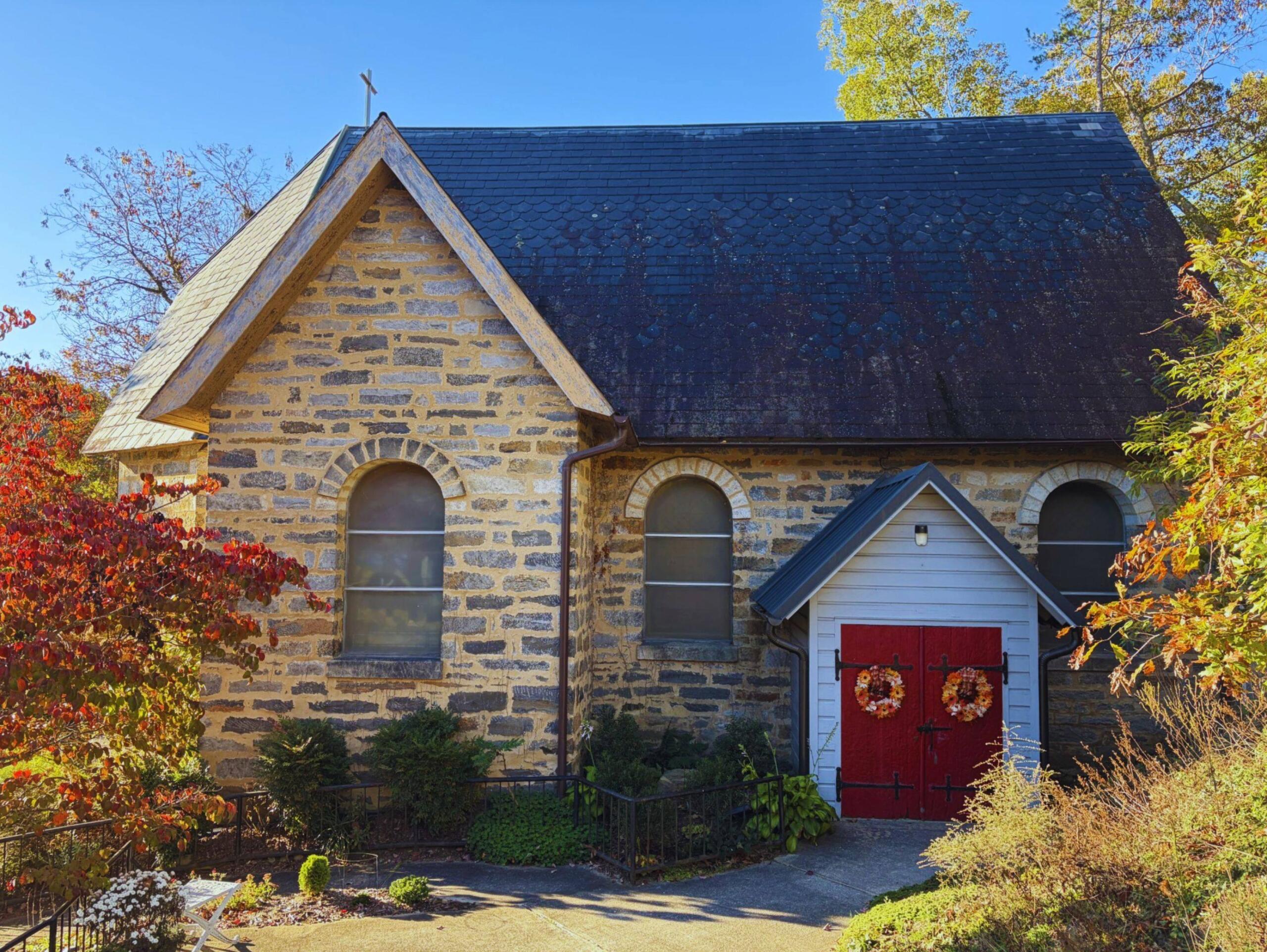
When construction was completed in 1888, the first service was held under its original name, St. Philip’s. A decade later, Willis and his wife, Catherine, deeded the chapel and surrounding land to the Episcopal missionary district. The act turned their private place of worship into a community church. It was formally consecrated as the Church of the Redeemer in 1901.
The small chapel soon became known for its beauty. Sunlight filters through its stained-glass windows, including one created by Louis Comfort Tiffany. The slate roof carries scalloped decorative bands, and a later addition of a carved rood screen gave the interior a Gothic touch. A state preservation report described the church as “an architectural oddity in its southern mountain context,” a reflection of the wave of worldly newcomers who brought their “exotic dreams” to Asheville after the railroad opened the region in 1880.
Dr. Willis lived to see his church thrive. He died in 1906 and was buried in the cemetery above the chapel beside his wife, who had passed four years earlier. After his death, services slowed until local parishioners revived the congregation. The stone church still stands above the river, quiet and enduring.
Stories of the ghostly woman have also endured, a figure said to walk between worlds of faith and mystery. Her legend remains a reminder that even the most steadfast places can hold secrets that never rest.

